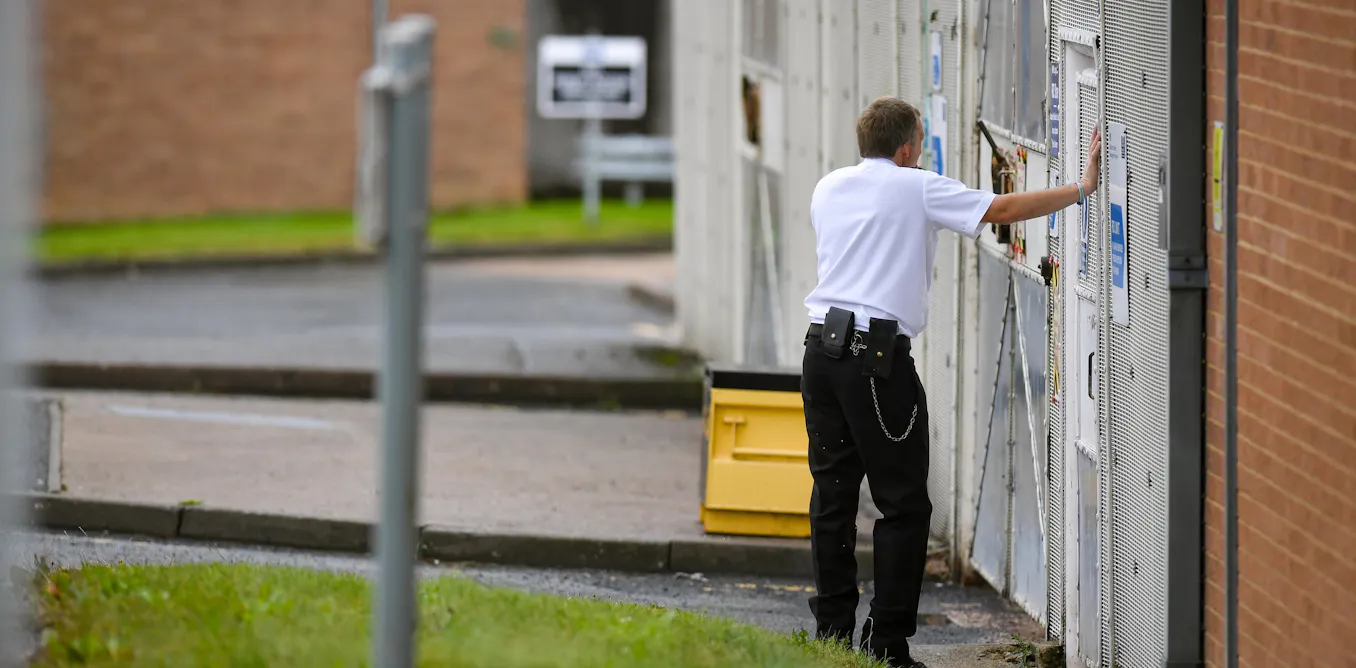Copyright theconversation

The mistaken release of a sex offender who was set to be deported exposes the staffing pressures at the heart of Britain’s prisons crisis. A senior prison employee told the BBC that Hadush Kebatu’s accidental release was “down to a series of mistakes probably because staff are overworked and in short supply”. Prison overcrowding has become a serious political and societal issue. But while prison places are increasing with the construction of new prisons, staffing is not keeping pace. In 2019 there were roughly 3.7 prisoners per officer, in 2022 there were 3.8 prisoners per officer and in 2025 there were 3.9 prisoners per officer. Between August 2022 and August 2025 the prison population increased by more than 6,000 prisoners – yet the number of prison officers grew by only around 1,000. The recruitment and retention challenge is not just about numbers, but about experience. In the year to June 2025, 2,823 prison officers left the service in England and Wales. Of those who left, 56% had less than three years’ service, while 24% had less than a year. Understanding why is crucial if expanded prison capacity is to be matched by sufficient staffing. Fewer are joining than before too. Just 2,453 prison officers were appointed or promoted into the prison officer role in the same year – almost half the figure recorded the previous year. The prison and probation service notes “persistent recruitment and retention challenges” in parts of the country. And even for those who stay, the demanding nature of the job is evident in the fact that mental ill health was the leading cause of prison officer absence in the year to June 2025. The pressures prison officers face are often intensified by the danger that can come with prison work. A violent role In September 2025, armed robber Elias Morgan was sentenced to a life term for murdering former prison officer Lenny Scott. The judge said this was a revenge killing, four years after Scott seized a mobile phone from Morgan’s cell. It is a stark reminder that prison officers can be killed simply for doing their job. The Prison Officers’ Association, the union that represents prison officers, has described the environment in which they work as “one of the most hostile and violent in the world”. Earlier this year, four prison officers at HMP Frankland, County Durham, were attacked by a prisoner with a knife and hot oil, with three being hospitalised. The prisoner has been charged with three counts of attempted murder. These incidents sit within a wider pattern of violence against prison officers. In the 12 months to March 2025, 10,568 assaults on staff were recorded – a 7% increase from the previous year. This equates to 28 assaults on staff per day across the service. Protecting prison officers is not only a matter of justice for them as individuals, but crucial for a safe and well-functioning prison system. High levels of violence can make recruitment and retention more difficult, leaving prisons struggling to find enough staff to safely manage a growing prison estate. Better support for officers in these challenging conditions is vital. In response to the serious assault faced by staff in HMP Frankland, the government has rolled out 500 tasers and 10,000 stab vests for prison staff. While these measures may improve safety in some situations, they are not a remedy for prison violence. One officer I interviewed described being stabbed in an attack that led to their medical retirement. Neither a vest nor a taser would have prevented this incident due to where they were stabbed. This highlights that, while protective equipment may help in certain situations of violence, the main causes of violence – including understaffing and overcrowding – remain unaddressed. Charlie Taylor, the chief inspector of prisons, recently reported that over 60% of prisoners in London’s HMP Pentonville are in overcrowded cells, with the prison’s physical infrastructure “crumbling”. Building new prisons to meet rising demand will not address the fact that some of our Victorian prisons are simply not fit for purpose. A lack of staff also has detrimental effects on prisoners. Taylor’s Pentonville inspection found that most prisoners were spending 22 hours a day in their cells with nothing to do. This reflects the lack of staff to run the regime effectively – a problem that new prisons alone won’t solve. It’s known that working in a prison exposes people to high levels of PTSD, depression, stress and anxiety. Without enough officers to safely staff existing prisons, building more prisons will only increase the pressure on staff. Protecting prison staff and supporting their wellbeing is vital if the government is to expand the prison estate while ensuring that prisons are safely and effectively staffed. Without addressing these pressures, simply building more prisons risks creating a system that is larger, but no safer nor more effective.



